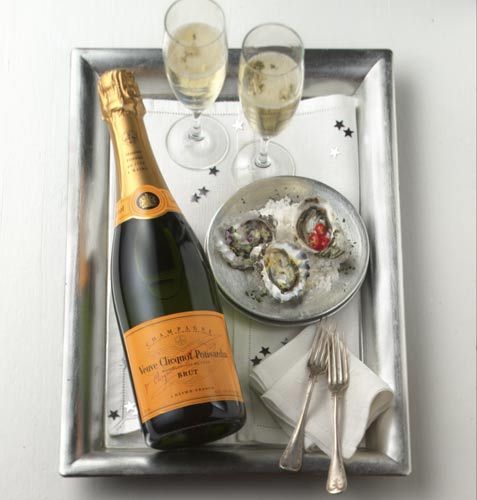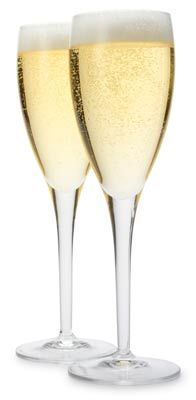
What makes the New Year’s Eve drink of choice different from other sparkling wines? The answer: location, location, location! Champagne is not only the name of a sparkling wine, but more specifically, it’s a region in France. Aside from Champagne being one of the northernmost wine producing regions of the world, it’s easily one of the most misunderstood wines.
All that glitters is certainly not gold and all that bubbles is not Champagne. Only wines that are made within that delimited region can carry the hallowed name “Champagne”. The secret to Champagne? In its still wine stage, Champagne undergoes a unique second fermentation while in the bottle. Other wines are simply shot full of carbon dioxide while in a tank, then bottled. The choice is yours.
Here are my top 5 favorite non-vintage bubbles:

- Bollinger Special Cuvee Champagne – as the name implies this wine IS SPECIAL – 93/100 points from Wine Spectator and made from lots of Pinot Noir grapes from Grand Cru vineyards. Before it undergoes the second fermentation it is aged in small oak barriques. Herein is the secret; it is full bodied, with lots of biscuit and brioche flavors. It will dance across your tongue. And guess what? Drink it from a Riedel Cabernet stem – not a flute – it’s so complex – it needs the air the larger stem gives it!
- Billecart Salmon Rose Champagne – made with plenty of Pinot Noir grapes which gives this wine it’s coppery hue, it’s dry with toasty complexity and raspberry elegance; perfect for the main meal!
- Veuve Clicquot Champagne – the iconic yellow label draws proper attention to its consistency and great flavors! Medium bodied elegance!
- Duval Leroy Champagne – fuller bodied with nutty aromas around the center of lemons and graphite.
- Champagne Henriot Brut Souverain – firm and toasty with hints of tropical fruit, lemon zest and ginger.

Champagne stands out because of its blending. Cellar masters use three grapes: Chardonnay, Pinot Noir and the obscure Pinot Meunier. Remember that all great wines begin with great grapes – Champagne is no different.
The best grapes from Grand Cru or Premier Cru vineyards, within the Champagne region, are specified when making that first fermentation of still wine before the yeast and sugars are added to start that magical secondary fermentation. This quality is reflected in the complexity, flavors and length of finish in the final product.
Remember that a vintage bottle of Champagne contains grapes coming entirely from the year on the bottle. It should be a better bottle as not every year is declared a vintage year in the region. A non-vintage bottle, however, will always carry that “house style” as it’s a blend of several years (vintage and not) that are stored in caves at the domain.
The wine world is full of paradigms and sayings that are rather, well… they’re sayings. But one that I will stick by is that once you’ve had GOOD Champagne, all others will seem like bubbly grape juice.
My advice? Save most of the Cava’s (Spain), Prosecco’s (Italy) and Sekt’s (Germany) for delicious Mimosa’s (Orange Juice) or Bellini’s (Peach Nectar) and break out the true Champagne for your New Year’s toasts. Champagne comes in all degrees of dryness, fullness and flavor profiles that not only make them excellent for New Year’s toasts, but can be drunk throughout the main meal given the right pairings.
Cheers to a healthy 2012!
Bill Belkin, wine and spirits category manager





